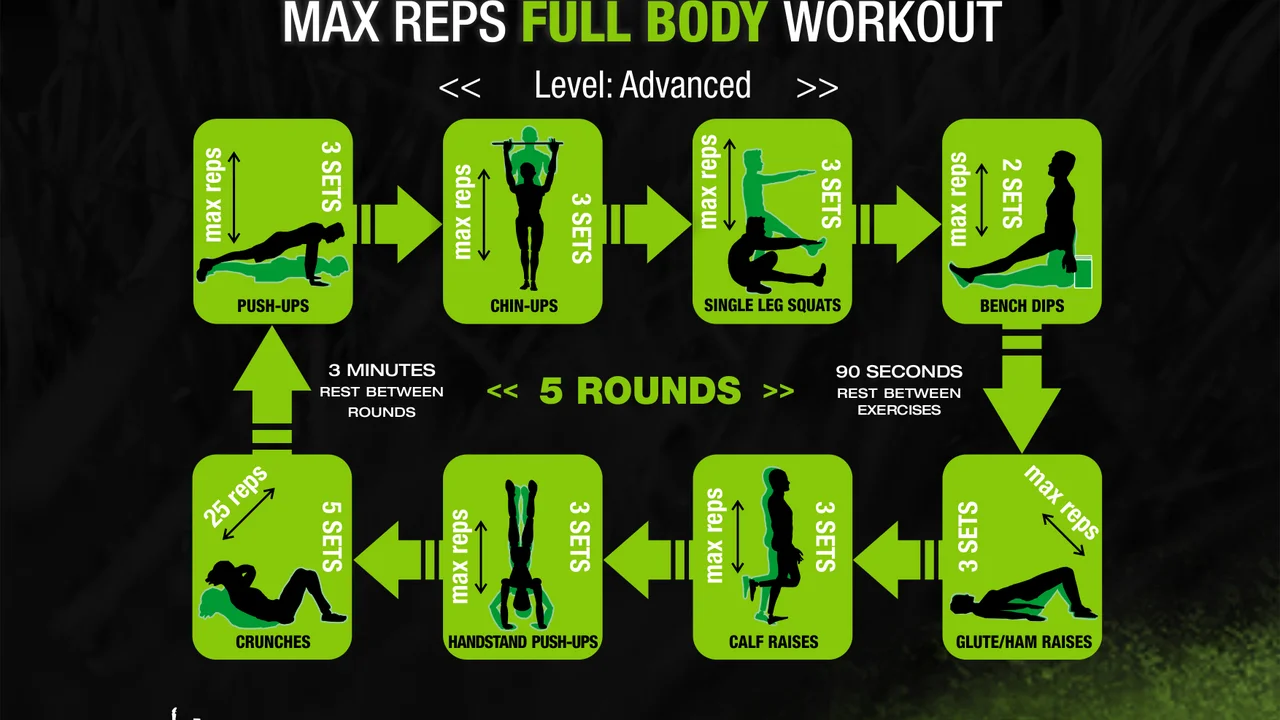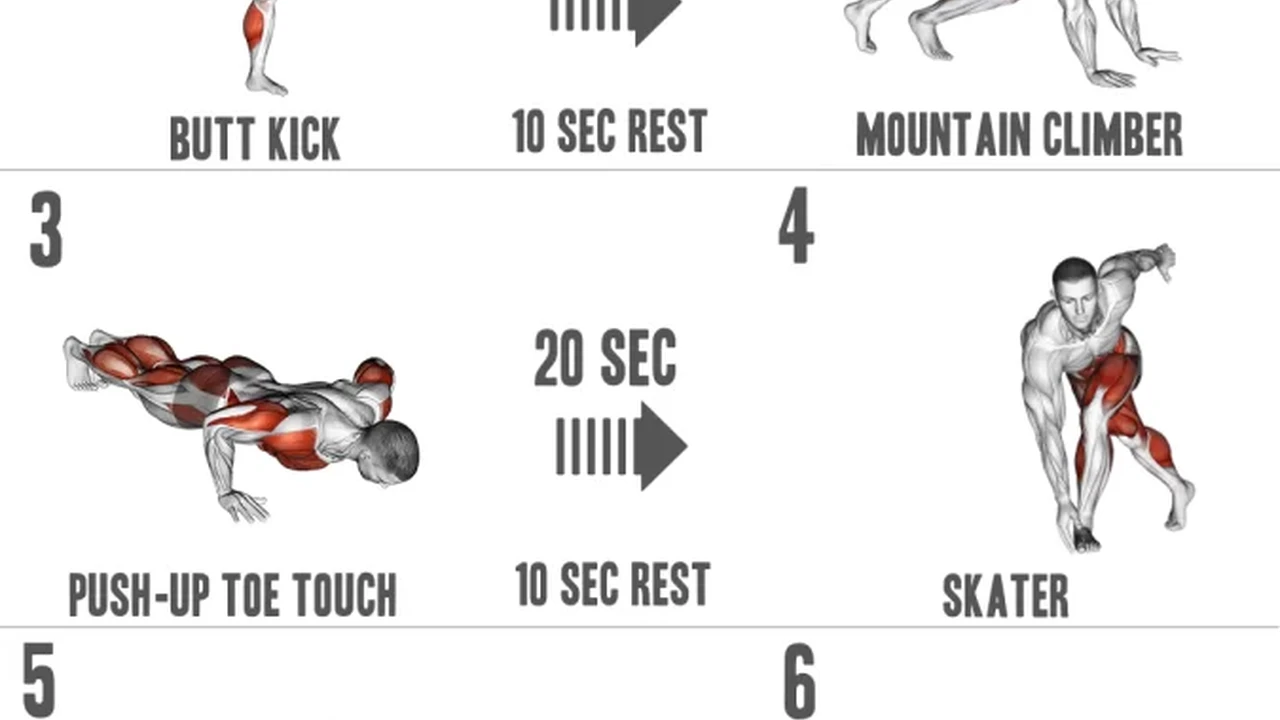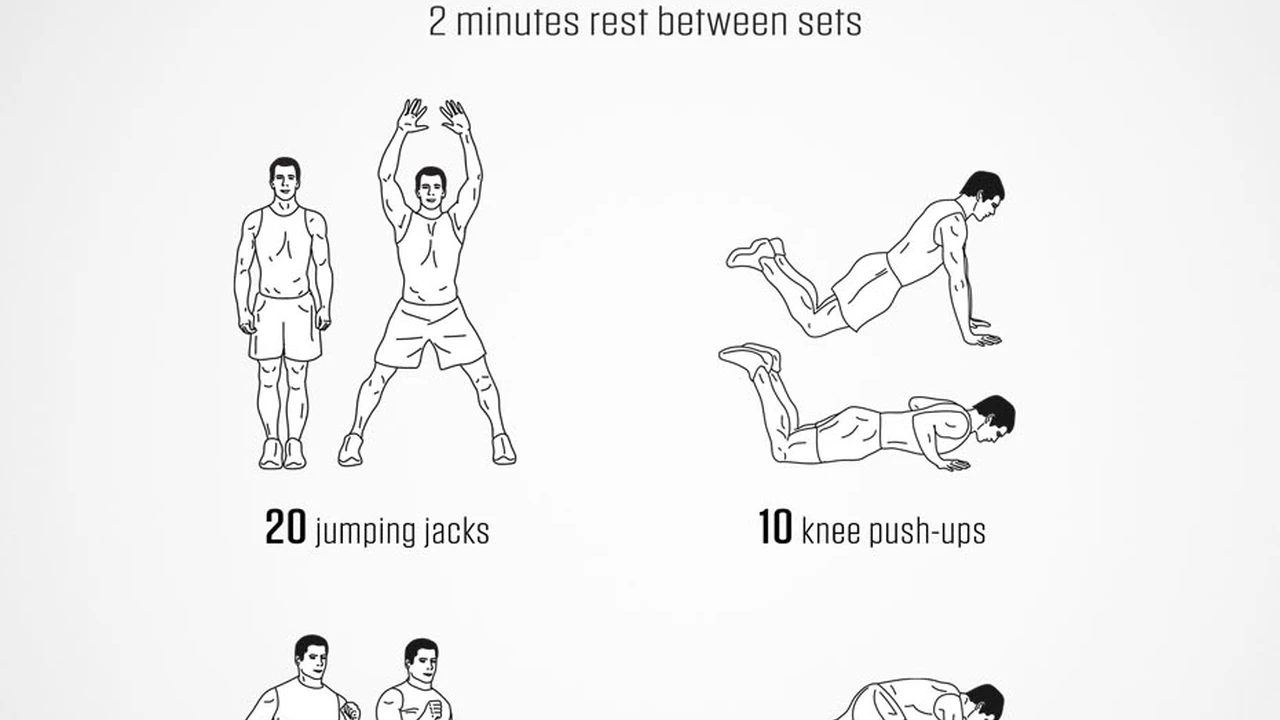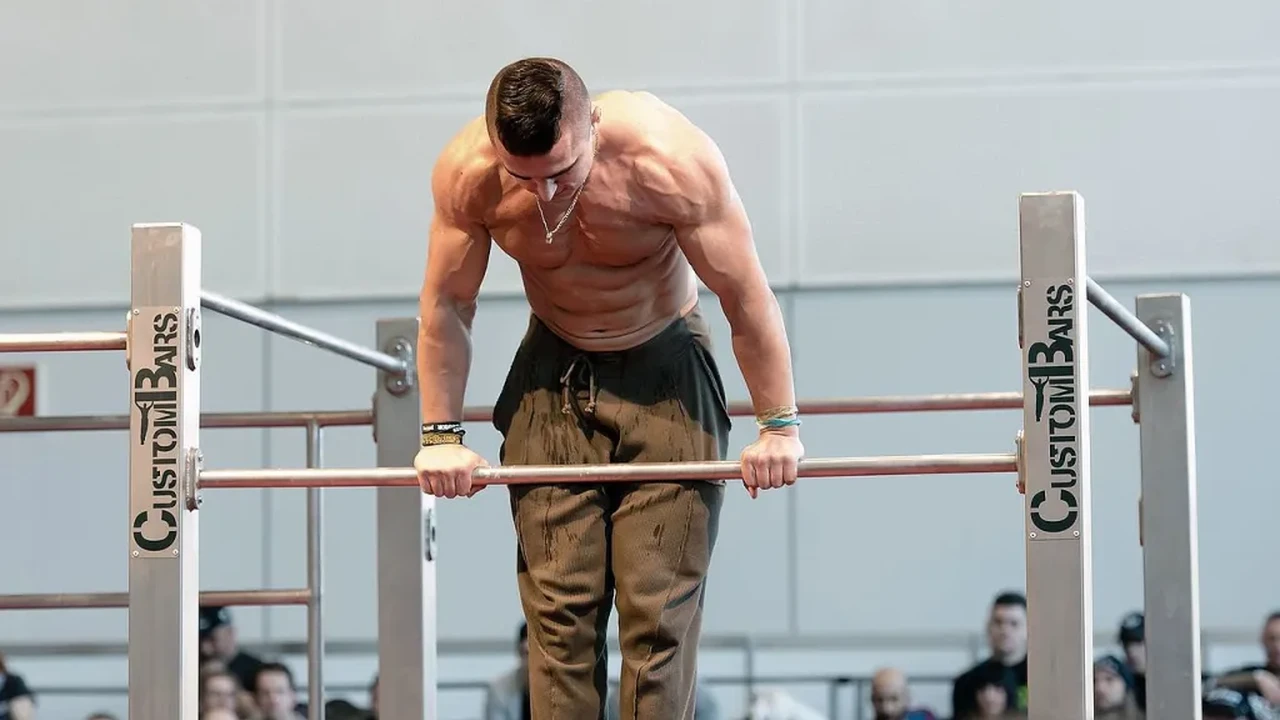Advanced Street Workout Program_ Mastering Calisthenics

Understanding the Fundamentals of Street Workout Program Design
So, you're ready to design your own street workout program? Awesome! But before you start throwing together exercises, let's talk about the fundamentals. Just like building a house, you need a solid foundation. In this case, that foundation is understanding the principles of progressive overload, specificity, and recovery.
Progressive Overload Explained
Progressive overload is the gradual increase of stress placed upon the body during exercise. This is the key to getting stronger, building muscle, and improving your overall fitness. Think of it like this: if you always lift the same weight, your body will adapt, and you'll stop seeing progress. You need to constantly challenge yourself by increasing the weight, reps, sets, or difficulty of the exercises.
There are several ways to implement progressive overload in your street workout program:
- Increase Resistance: This could mean adding weight to your exercises using a weighted vest, dip belt, or even just holding a brick.
- Increase Repetitions: If you can easily perform a certain number of reps, try adding one or two more each workout.
- Increase Sets: Adding an extra set or two to your exercises can significantly increase the overall volume and challenge your muscles.
- Decrease Rest Time: Shortening the rest periods between sets can increase the intensity of your workout and improve your cardiovascular fitness.
- Increase Exercise Difficulty: This is where street workout really shines. You can progress to more challenging variations of exercises, such as moving from push-ups to diamond push-ups to one-arm push-ups.
- Increase Frequency: Adding an extra workout day to your week can also contribute to progressive overload, but be careful not to overtrain.
The Principle of Specificity in Street Workout Training
The principle of specificity states that you'll improve at the specific exercises and movements that you train. In other words, if you want to get better at pull-ups, you need to do pull-ups! This doesn't mean you should only do pull-ups, but it does mean that your program should include exercises that directly target the muscles you want to develop.
For example, if your goal is to perform a muscle-up, you should include exercises that strengthen your pulling muscles (back and biceps) and your pushing muscles (chest, shoulders, and triceps). Some good exercises for the muscle-up include:
- Pull-ups
- Chin-ups
- Dips
- Rows
- False Grip Training
The Importance of Recovery for Street Workout Athletes
Recovery is just as important as training. Your muscles don't grow during your workouts; they grow during rest. If you don't give your body enough time to recover, you'll be more prone to injuries, and you won't see the results you're hoping for.
Here are some key components of recovery:
- Sleep: Aim for 7-9 hours of quality sleep per night.
- Nutrition: Eat a balanced diet that provides your body with the nutrients it needs to repair and rebuild muscle tissue.
- Hydration: Drink plenty of water throughout the day.
- Active Recovery: Incorporate light activities like walking, stretching, or yoga into your routine to improve blood flow and reduce muscle soreness.
- Rest Days: Schedule rest days into your program to allow your body to fully recover.
Structuring Your Street Workout Program for Optimal Results
Now that you understand the fundamentals, let's talk about how to structure your program. A well-structured program should include a warm-up, a workout, and a cool-down.
Warming Up Before Your Street Workout Routine
A proper warm-up prepares your body for exercise by increasing blood flow to your muscles, improving joint mobility, and reducing the risk of injury. Your warm-up should last for 5-10 minutes and include dynamic stretching and light cardio.
Here are some good warm-up exercises for street workout:
- Arm circles
- Leg swings
- Torso twists
- Jumping jacks
- High knees
- Butt kicks
Designing Effective Street Workout Routines
Your workout should consist of a variety of exercises that target all the major muscle groups. You can organize your workouts in several different ways, such as:
- Full Body Workouts: These workouts target all the major muscle groups in a single session. They're a good option for beginners or those who only have time to train a few days per week.
- Upper/Lower Splits: These workouts split your body into two groups: upper body and lower body. You'll train each group on separate days.
- Push/Pull/Legs Splits: These workouts split your body into three groups: pushing muscles (chest, shoulders, and triceps), pulling muscles (back and biceps), and legs.
When selecting exercises, consider your goals and your current fitness level. Start with basic exercises and gradually progress to more challenging variations as you get stronger.
Here's an example of a full-body street workout routine:
- Pull-ups: 3 sets of as many reps as possible (AMRAP)
- Push-ups: 3 sets of AMRAP
- Dips: 3 sets of AMRAP
- Squats: 3 sets of 15-20 reps
- Plank: 3 sets of 30-60 seconds
Cooling Down After Your Street Workout Session
A cool-down helps your body gradually return to its resting state. It can also help reduce muscle soreness and improve flexibility. Your cool-down should last for 5-10 minutes and include static stretching.
Here are some good cool-down stretches for street workout:
- Hamstring stretch
- Quadriceps stretch
- Calf stretch
- Chest stretch
- Triceps stretch
- Back stretch
Selecting the Right Street Workout Equipment for Your Needs
While street workout is often associated with minimal equipment, having the right gear can enhance your training and help you achieve your goals. Here's a look at some popular options:
Weighted Vests for Progressive Overload in Street Workout
A weighted vest is a versatile piece of equipment that can be used to add resistance to a variety of exercises, such as pull-ups, push-ups, dips, and squats. It's a great way to implement progressive overload and challenge your muscles in new ways. The added weight forces your muscles to work harder, leading to increased strength and muscle growth. It's also very convenient as it doesn't limit your range of motion.
Recommended Product: Hyperwear Hyper Vest PRO
The Hyperwear Hyper Vest PRO is a high-quality weighted vest that's designed for comfort and performance. It features a slim profile and adjustable weight, allowing you to customize the resistance to your needs. The vest is made from breathable materials and features a unique design that distributes the weight evenly across your torso.
Use Cases:
- Increasing the difficulty of bodyweight exercises: Add weight to pull-ups, push-ups, dips, and squats to challenge your muscles.
- Improving cardiovascular fitness: Wear the vest during cardio activities like running or hiking to increase the intensity.
- Adding resistance to plyometric exercises: Use the vest to increase the explosive power of exercises like jump squats and box jumps.
Pricing: The Hyperwear Hyper Vest PRO typically ranges from $200 to $300, depending on the weight capacity and retailer.
Alternatives to Hyperwear Hyper Vest PRO
- RUNFast/Max Pro Weighted Vest: A budget-friendly option with fixed weight increments.
- Condor Outdoor Modular Operator Plate Carrier: A more tactical option that allows for customization with weight plates.
Resistance Bands for Street Workout Versatility
Resistance bands are another versatile piece of equipment that can be used to add resistance to exercises or to assist with exercises that are too difficult. They're also great for warming up and stretching.
Recommended Product: Rogue Fitness Monster Bands
Rogue Fitness Monster Bands are high-quality resistance bands that are made from durable latex. They come in a variety of sizes and resistance levels, allowing you to choose the right band for your needs. They're known for their durability and consistent resistance.
Use Cases:
- Adding resistance to exercises: Use the bands to add resistance to exercises like squats, push-ups, and rows.
- Assisting with exercises: Use the bands to assist with exercises like pull-ups and dips.
- Warming up and stretching: Use the bands to warm up your muscles and improve your flexibility.
Pricing: Rogue Fitness Monster Bands range from $10 to $40 per band, depending on the size and resistance level.
Alternatives to Rogue Fitness Monster Bands
- TheraBand Resistance Bands: A widely available and affordable option for light to medium resistance.
- Serious Steel Fitness Resistance Bands: Known for their heavy-duty construction and high resistance levels.
Parallettes for Advanced Street Workout Movements
Parallettes are small parallel bars that can be used to perform a variety of advanced street workout movements, such as handstands, planche progressions, and L-sits. They elevate your hands off the ground, allowing for a greater range of motion and reducing wrist strain.
Recommended Product: Garage Fit Parallettes
Garage Fit Parallettes are a sturdy and well-built option made from steel. They are known for their stability and durability, making them suitable for a variety of exercises. They offer a good balance between quality and affordability.
Use Cases:
- Handstand training: Use the parallettes to improve your handstand balance and control.
- Planche progressions: Use the parallettes to work on planche progressions, such as the tuck planche and the advanced tuck planche.
- L-sit training: Use the parallettes to work on your L-sit strength and endurance.
Pricing: Garage Fit Parallettes typically range from $80 to $120 per pair.
Alternatives to Garage Fit Parallettes
- Titan Fitness Parallettes: A more affordable option with a slightly less robust construction.
- Nayoya Parallettes: A wooden option known for its comfortable grip.
Nutrition Strategies for Street Workout Performance and Recovery
Proper nutrition is essential for fueling your workouts, recovering from training, and building muscle. Here are some key nutritional considerations for street workout athletes:
Macronutrient Needs for Street Workout Training
Macronutrients are the essential nutrients that your body needs in large quantities: protein, carbohydrates, and fats.
- Protein: Protein is essential for building and repairing muscle tissue. Aim for 0.8-1 gram of protein per pound of body weight per day. Good sources of protein include lean meats, poultry, fish, eggs, dairy products, and plant-based sources like beans, lentils, and tofu.
- Carbohydrates: Carbohydrates are your body's primary source of energy. Choose complex carbohydrates over simple carbohydrates whenever possible. Good sources of complex carbohydrates include whole grains, fruits, and vegetables.
- Fats: Fats are important for hormone production, cell function, and overall health. Choose healthy fats over unhealthy fats. Good sources of healthy fats include avocados, nuts, seeds, and olive oil.
Supplementation for Street Workout Performance
While a balanced diet should be your primary focus, some supplements can help enhance your performance and recovery.
Creatine Monohydrate for Strength and Power in Street Workout
Creatine monohydrate is one of the most well-researched and effective supplements for increasing strength and power. It works by increasing the amount of creatine phosphate in your muscles, which helps to fuel short bursts of high-intensity activity.
Recommended Product: Optimum Nutrition Micronized Creatine Monohydrate
Use Cases:
- Increasing strength and power for exercises like pull-ups, push-ups, and dips.
- Improving muscle recovery after workouts.
Dosage: The typical dosage is 3-5 grams per day.
Pricing: Optimum Nutrition Micronized Creatine Monohydrate is typically priced between $15 and $25 per container.
Alternatives to Optimum Nutrition Micronized Creatine Monohydrate
- BulkSupplements.com Creatine Monohydrate: A cost-effective option for buying creatine in bulk.
- Myprotein Creatine Monohydrate: A popular brand known for its quality and affordability.
Beta-Alanine for Endurance in Street Workout
Beta-alanine is an amino acid that helps to increase muscle carnosine levels, which can buffer lactic acid and improve muscular endurance. This can be particularly beneficial for exercises that involve high reps or sustained effort.
Recommended Product: NOW Foods Beta-Alanine Powder
Use Cases:
- Improving muscular endurance for high-rep exercises.
- Delaying muscle fatigue during longer workouts.
Dosage: The typical dosage is 2-5 grams per day, divided into multiple doses.
Pricing: NOW Foods Beta-Alanine Powder typically ranges from $20 to $30 per container.
Alternatives to NOW Foods Beta-Alanine Powder
- NutraBio Beta-Alanine: A high-quality option with a focus on purity and effectiveness.
- Transparent Labs Beta-Alanine: A premium option with a focus on transparency and ingredient quality.
Sample Street Workout Programs for Different Skill Levels
Here are some sample street workout programs for different skill levels:
Beginner Street Workout Program
This program is designed for individuals who are new to street workout or who have limited experience with bodyweight exercises.
Workout Schedule: Train 3 days per week, with rest days in between.
Workout:
- Warm-up: 5-10 minutes of dynamic stretching and light cardio.
- Pull-ups (assisted if needed): 3 sets of AMRAP
- Push-ups (on knees if needed): 3 sets of AMRAP
- Dips (assisted if needed): 3 sets of AMRAP
- Squats: 3 sets of 15-20 reps
- Plank: 3 sets of 30-60 seconds
- Cool-down: 5-10 minutes of static stretching.
Intermediate Street Workout Program
This program is designed for individuals who have a solid foundation in bodyweight exercises and are looking to progress to more challenging movements.
Workout Schedule: Train 4 days per week, using an upper/lower split.
Upper Body Workout:
- Warm-up: 5-10 minutes of dynamic stretching and light cardio.
- Pull-ups: 3 sets of AMRAP
- Chin-ups: 3 sets of AMRAP
- Dips: 3 sets of AMRAP
- Diamond Push-ups: 3 sets of AMRAP
- Inverted Rows: 3 sets of 10-12 reps
- Plank: 3 sets of 30-60 seconds
- Cool-down: 5-10 minutes of static stretching.
Lower Body Workout:
- Warm-up: 5-10 minutes of dynamic stretching and light cardio.
- Squats: 3 sets of 15-20 reps
- Lunges: 3 sets of 10-12 reps per leg
- Jump Squats: 3 sets of 10-12 reps
- Calf Raises: 3 sets of 15-20 reps
- Glute Bridges: 3 sets of 15-20 reps
- Cool-down: 5-10 minutes of static stretching.
Advanced Street Workout Program
This program is designed for individuals who have mastered the basics and are looking to achieve advanced skills like the muscle-up, planche, and front lever.
Workout Schedule: Train 5-6 days per week, using a push/pull/legs split.
Push Workout:
- Warm-up: 5-10 minutes of dynamic stretching and light cardio.
- Dips: 3 sets of AMRAP
- Pseudo Planche Push-ups: 3 sets of AMRAP
- Handstand Push-ups (against a wall or free standing): 3 sets of AMRAP
- Triceps Extensions: 3 sets of 10-12 reps
- Cool-down: 5-10 minutes of static stretching.
Pull Workout:
- Warm-up: 5-10 minutes of dynamic stretching and light cardio.
- Pull-ups: 3 sets of AMRAP
- Muscle-up Progressions (if able to perform muscle-ups): 3 sets of AMRAP
- Front Lever Progressions: 3 sets of AMRAP
- Inverted Rows: 3 sets of 10-12 reps
- Bicep Curls (using resistance band): 3 sets of 10-12 reps
- Cool-down: 5-10 minutes of static stretching.
Legs Workout:
- Warm-up: 5-10 minutes of dynamic stretching and light cardio.
- Pistol Squats (assisted if needed): 3 sets of AMRAP per leg
- Bulgarian Split Squats: 3 sets of 10-12 reps per leg
- Jump Squats: 3 sets of 10-12 reps
- Calf Raises: 3 sets of 15-20 reps
- Nordic Hamstring Curls (assisted if needed): 3 sets of 6-8 reps
- Cool-down: 5-10 minutes of static stretching.
Common Street Workout Mistakes to Avoid
To maximize your results and minimize your risk of injury, it's important to avoid these common street workout mistakes:
- Skipping the warm-up: A proper warm-up is essential for preparing your body for exercise.
- Using improper form: Using improper form can lead to injuries and limit your progress. Focus on maintaining proper form throughout each exercise.
- Overtraining: Overtraining can lead to fatigue, injuries, and burnout. Make sure you're getting enough rest and recovery.
- Not progressing gradually: Trying to progress too quickly can lead to injuries. Gradually increase the difficulty of your exercises as you get stronger.
- Ignoring nutrition: Proper nutrition is essential for fueling your workouts and recovering from training.
- Not listening to your body: Pay attention to your body and rest when you need to. Don't push yourself too hard if you're feeling pain.
Finding Street Workout Communities and Resources
Connecting with other street workout enthusiasts can provide motivation, support, and valuable learning opportunities. Here are some resources to explore:
- Local Street Workout Parks: Search for street workout parks or calisthenics parks in your area.
- Online Forums and Communities: Join online forums and communities dedicated to street workout, such as Reddit's r/calisthenics.
- Social Media Groups: Follow street workout athletes and communities on social media platforms like Instagram and YouTube.
- Street Workout Competitions and Events: Attend street workout competitions and events to learn from top athletes and connect with other enthusiasts.
Staying Motivated and Consistent with Your Street Workout Journey
Consistency is key to achieving your fitness goals. Here are some tips for staying motivated and consistent with your street workout journey:
- Set Realistic Goals: Set achievable goals that will keep you motivated.
- Track Your Progress: Track your progress to see how far you've come.
- Find a Workout Partner: Working out with a partner can help you stay motivated and accountable.
- Make it Fun: Choose exercises that you enjoy and find ways to make your workouts fun.
- Reward Yourself: Reward yourself for reaching your goals.
- Don't Give Up: There will be times when you feel like giving up. Don't! Just keep going, and you'll eventually reach your goals.
:max_bytes(150000):strip_icc()/277019-baked-pork-chops-with-cream-of-mushroom-soup-DDMFS-beauty-4x3-BG-7505-5762b731cf30447d9cbbbbbf387beafa.jpg)






